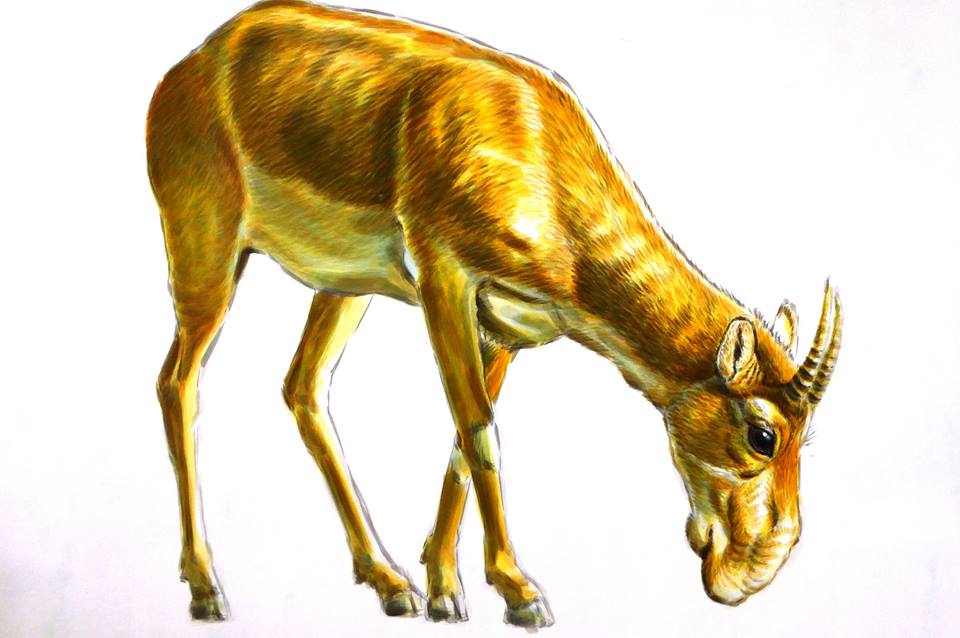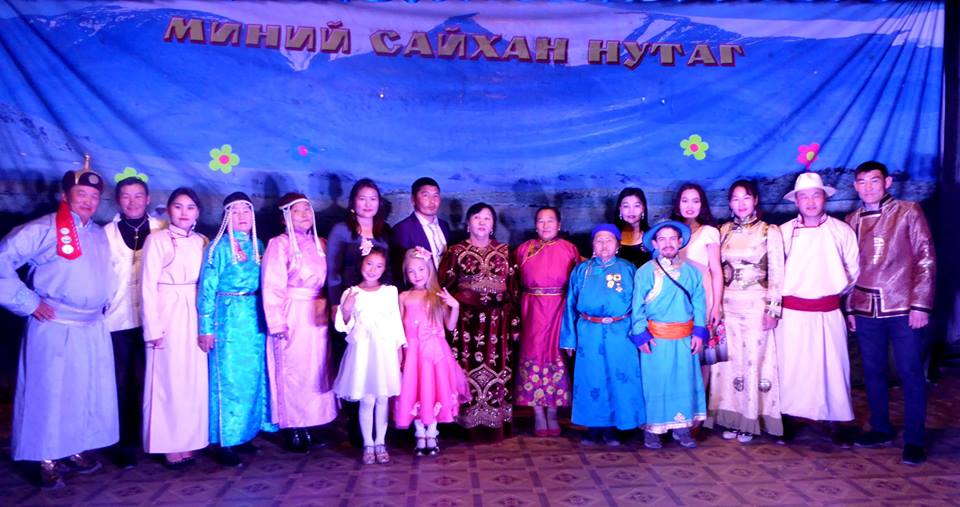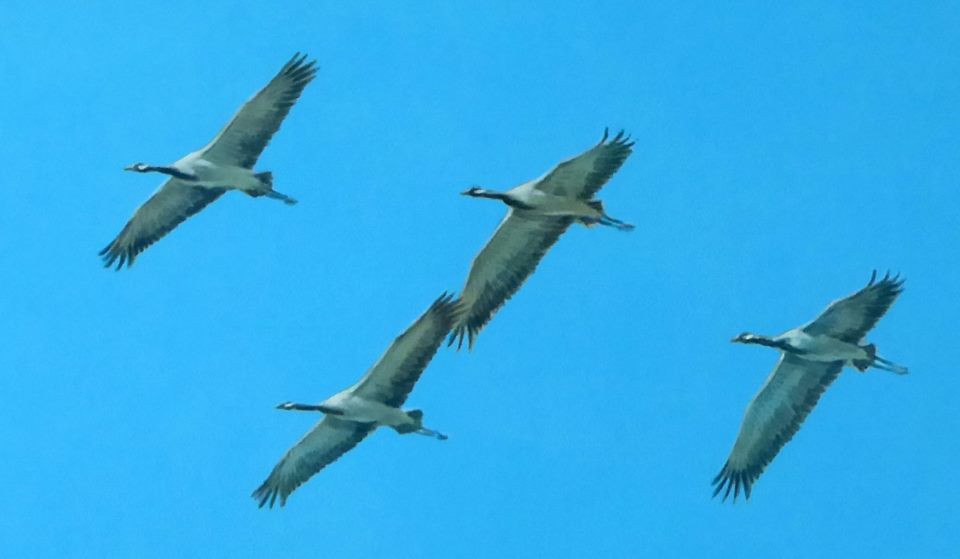I arrived into Mongolia’s capital, Ulaanbataar on the 24th of September 2017. My objective: to paint a set of murals depicting the steppe wildlife (with the Saiga at the centre) as a way of engaging on conservation issues with rural communities. This was to be my fourth such project across the Saiga’s range, having already carried out community engagement projects in Uzbekistan, Kazakhstan and Russia (check these out by clicking here). After a secret-agent-like exchange of paints, I took a domestic flight to Khovd in the far West. Here I was met by Galaa, the WWF-Mongolia Communications officer for the field office. The next day, on a brand-new road paid for by China, we passed through the Altai mountains which Galaa described as the ‘land of the snow leopard’. We arrived into Sharga soum (soum means village) in the early evening and settled into the school dormitory, which was our accommodation for the next few nights.
Most of the children didn’t see me arrive, so they must have wondered if I was some strange apparition when I appeared in the washroom the next morning in my paint-splatted clothes. I later introduced myself to the whole school with some photos of family and by playing the ukulele – a sure-fire ice-breaker! The wall I was assigned to paint was already painted with oil-based paints. As such, it took a long time to prime and cover with my own water-based paints. I was watched closely for 3 hours by staff and students who must have wondered why on earth some foreigner had travelled thousands of miles to paint a section of their wall white. Finally, I could move onto the detail and begin to see a change in the audiences’ facial expressions. I stayed for 2 days of painting in this village and was given a wonderful send-off dinner of boiled sheep heads.
 Our second village was called Bayan Uul Soum and it was much bigger than Sharga with much more lively school children. We had 6 days in Bayan Uul, where I had more time to observe village life. Volleyball is a favourite sport – played by young and old alike. Water is scarce and distant and brought in by motorbike each day. And singing is very popular. A real highlight of my time in the village was singing in a local concert (I sang in Mongolian and English…but don’t be too impressed, the Mongolian was written out for me) where I was dressed from head to foot in Mongolian garb. I put on my deepest and most resonant singing voice, but still couldn’t match the locals for their deep, gravely notes. And that was just up against the old ladies.
Our second village was called Bayan Uul Soum and it was much bigger than Sharga with much more lively school children. We had 6 days in Bayan Uul, where I had more time to observe village life. Volleyball is a favourite sport – played by young and old alike. Water is scarce and distant and brought in by motorbike each day. And singing is very popular. A real highlight of my time in the village was singing in a local concert (I sang in Mongolian and English…but don’t be too impressed, the Mongolian was written out for me) where I was dressed from head to foot in Mongolian garb. I put on my deepest and most resonant singing voice, but still couldn’t match the locals for their deep, gravely notes. And that was just up against the old ladies.
A low point of my stay was falling ill. I think it might have been the daily dose of sheep heads. I had a night of horror, where all cylinders were firing but I was locked in the dormitory (we were locked into the top floor – which is done to stop the girls and boys canoodling in the night), so had to frantically locate various containers to hold my emotional outpourings. I am fairly confident that the dormitory will never smell the same again. Despite this, I had 4 good days of painting a large steppe scene and lots of great interactions with the whole community. Painting is a great way to deliver a message. It is a universal language, so you can take it anywhere and use it to connect with people. It is engaging for all ages and gets people thinking for themselves (which I think is much more powerful). And it lasts for years, delivering its subtle message each and every day.
I hope the villagers will see the murals as something to be proud of in their schools, just as they should be proud of the amazing wildlife that surrounds them. On our drive back to Khovd, we were lucky enough to see a herd of 12 Saiga – roughly one fiftieth of the remaining Mongolian population. I hope that the work of WWF Mongolia and the Saiga Conservation Alliance can keep this population alive for many generations to come.
With massive thanks to WWF Mongolia and the Saiga Conservation Alliance.
Spend a few moments watching the short clip about Rory’s trip.




